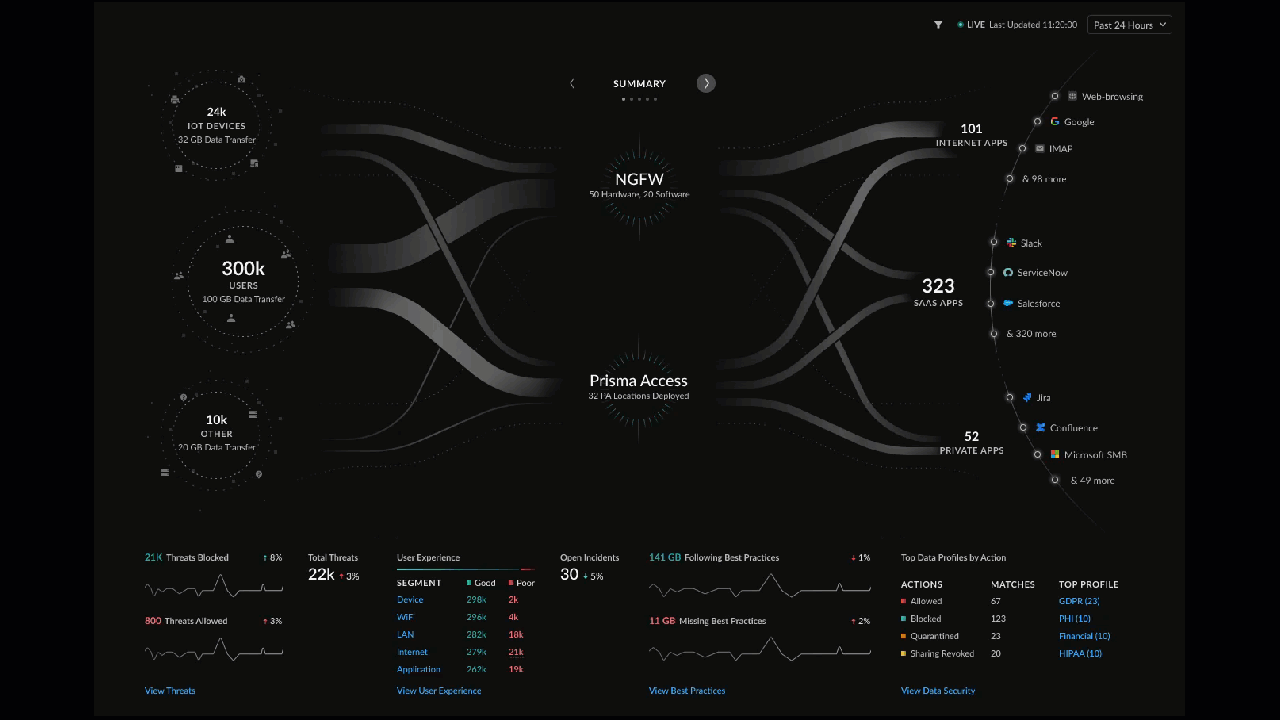Management Features
Table of Contents
Expand All
|
Collapse All
Next-Generation Firewall Docs
-
-
-
-
-
-
-
- PAN-OS 12.1
- PAN-OS 11.2
- PAN-OS 11.1
- PAN-OS 11.0 (EoL)
- PAN-OS 10.2
- PAN-OS 10.1
- PAN-OS 10.0 (EoL)
- PAN-OS 9.1 (EoL)
- PAN-OS 9.0 (EoL)
- PAN-OS 8.1 (EoL)
-
- PAN-OS 12.1
- PAN-OS 11.2
- PAN-OS 11.1
- PAN-OS 10.2
- PAN-OS 10.1
Management Features
What new management features are in PAN-OS 10.2?
New Management Feature | Description |
|---|---|
|
Accelerate Insights and Enhance Security with Telemetry
Autoenablement
PAN-OS 10.2.17 and later releases
|
Telemetry autoenablement
for Palo Alto Networks devices streamlines the activation and
configuration of telemetry, eliminating complex workflows and manual
setup. This feature ensures that upon device onboarding, telemetry
is automatically enabled and configured to stream data to the
correct data residency region, determined by your location or
existing configurations.
Strata Cloud Manager or hub now manages telemetry settings,
rather than individual Panorama or firewall devices. These services
store information for all devices within a tenant service group
(TSG), simplifying and automating telemetry configuration. This
approach removes operational hurdles, enabling full utilization of
telemetry's benefits while maintaining control over data sharing
preferences.
Consistent telemetry data streaming provides enhanced
security, faster security responses, and access to advanced features
through critical threat insights. Telemetry autoenablement ensures
your devices send valuable diagnostic and usage information,
significantly improving support case resolution times and offering
real-time insights into performance, usage, and potential
issues.
You have the ability to manage your telemetry
settings at the TSG level, including the option to change
the telemetry tier from Full to Diagnostic through the hub interface
or Strata Cloud Manager. This tiered approach ensures you can choose
the level of information shared while adhering to data privacy
requirements. Additionally, all telemetry configuration changes are
logged for audit purposes, assisting with compliance and security
policy adherence.
|
|
PAN-OS Software Patch Deployment
PAN-OS 10.2.8 and later releases
|
Download and install PAN-OS software patches to apply fixes to bug or
Common Vulnerability Exposure (CVE) without the need to schedule a
prolonged maintenance window to install a new PAN-OS version from
the Next-Generation Firewall or Panorama™ management server web
interface. This allows you to strength your security posture
immediately without introducing new known issues or changed to
default behaviors that may come with installing a new PAN-OS
version.
|
|
Policy Rulebase Management Using the Tag Browser
PAN-OS 10.2.5 and later releases
|
Tags allows you the ability to visually group your policy rulebase.
PAN-OS 10.2.5 introduces the Tag Browser which allows you to manage
your policy rulebase using the applied tags, and thereby simplifies
policy rulebase management.
|
AIOps for NGFW | Streamline your firewall operations
with AIOps for NGFW, a new product offered on the hub. AIOps for NGFW
leverages PAN-OS device telemetry and best practice assessments
to give you up-to-date information about device health and security
posture. This information includes alerts, interactive dashboards, remediation
recommendations, and more. |
Selective Commit of Configuration
Changes | PAN-OS 10.2 allows firewall
and Panorama administrators to review and select specific configuration objects
to commit, including configuration changes made by other administrators.
Leveraging selective commit allows you to maintain your defined
operational procedure while still being able to successfully make independent
configuration changes not defined in your operational scope. |
Simplified Software Upgrade | Firewalls and Panorama management servers
now validate software upgrades before you install them. This allows
more steps to be completed prior to the software installation, which
speeds up software upgrades and increases confidence in the upgrade
process. For example, prior to downloading the target release, the appliance
displays any required software, including intermediate software
versions and content dependencies, which you can download along
with the target release in one step. You can also use an SCP server
as a download source and view a history of software upgrades. |
|
Strata Cloud Manager Command Center
|
The Strata Cloud Manager
Command Center is your new NetSec homepage; it is
your first stop to assess the health, security, and efficiency of
your network. In a single view, the command center shows you all
users and IoT devices accessing the internet, SaaS applications, and
private apps, and how Prisma Access, your NGFWs, and your security
services are protecting them.

The command center provides you with four different views,
each with its own tracked data, metrics, and actionable insights to
examine and interact with:
When the command center surfaces an issue through one of
these views that you should address or investigate (an anomaly, a
security gap, a degraded user experience, something that impacts the
security and health of your network), it provides a path to where
you can take actions to further secure your network.
|
View Preferred and Base Releases of PAN-OS
Software PAN-OS 10.2.10 and later 10.2
releases |
The Panorama web interface now displays the preferred releases and
the corresponding base releases of PAN-OS software. Before you
upgrade or downgrade Panorama or PAN-OS, you can view the list of
preferred and base releases and choose your preferred target PAN-OS
release. Preferred releases offer the latest and the most advanced
features and ensure stability and performance. When there are no
preferred releases available, the corresponding base version is not
displayed. If necessary, you can choose to view either preferred
releases or base releases.
|
